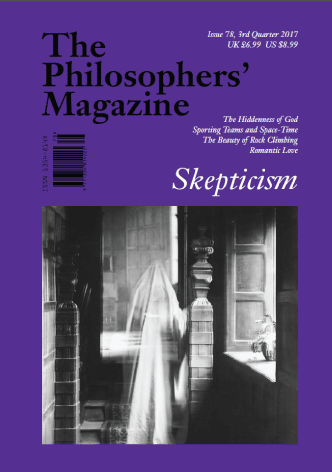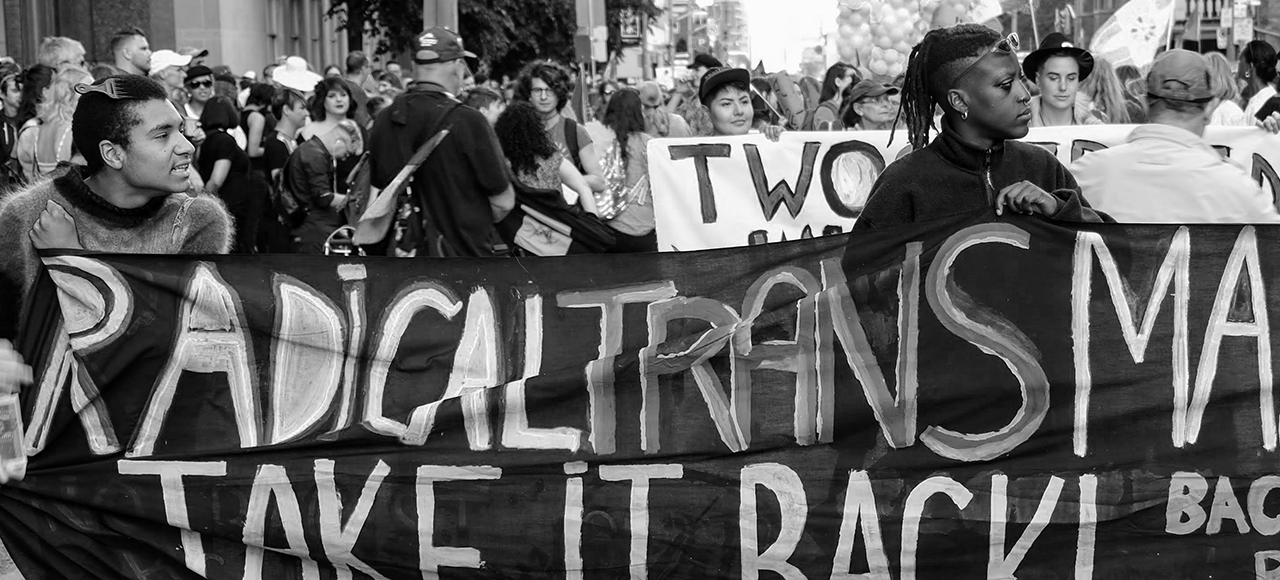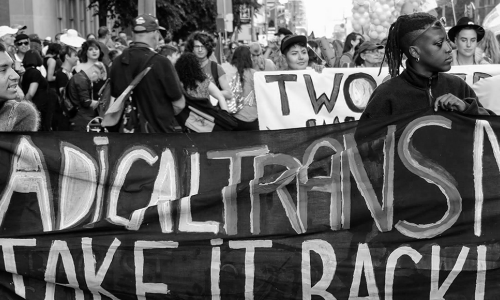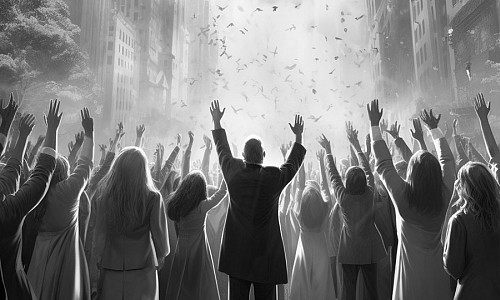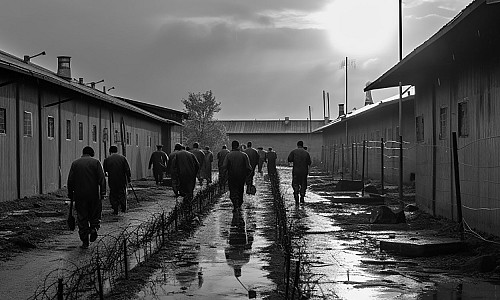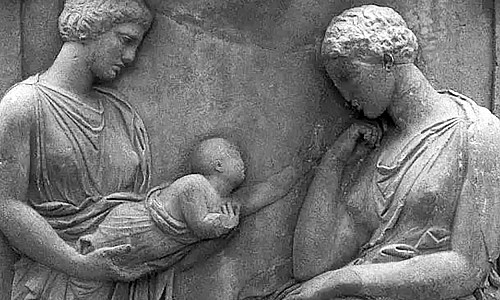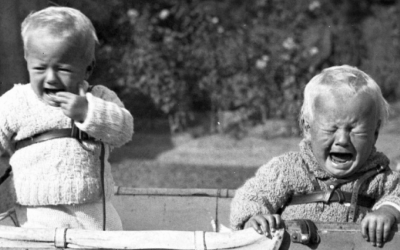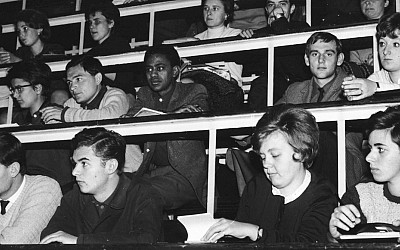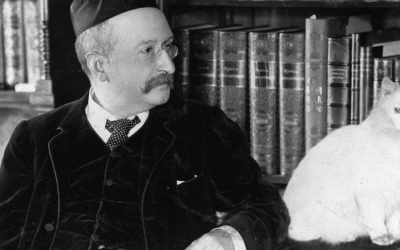Gary L. Francione on transgender-rights, equality claims, belief claims, and liberal pluralism.
To say that the matter of transgender rights is controversial is very much an understatement. Part of the problem is that there is a great deal of confusion about what is at stake—what exactly do we mean by “transgender rights”? What framework can best help us to explore the many issues and questions that are involved, and to resolve the conflicts that arise?
I maintain that we can better understand the controversy if we distinguish between two sorts of claims: (1) equality claims, or claims to be free from discrimination, based on one’s transgender status, concerning the distribution of basic goods such as employment, education, and housing; and (2) belief claims, or claims that we are discriminating against those who identify as transgender to the extent that we do not accept certain beliefs promoted by trans activists as literally true, or, at the very least, that we do not act as if we accept those claims as literally true and support changes in social institutions and practices so that they accord with those claims.
For the most part, the controversy about transgender rights focuses primarily on belief claims. Trans activists claim that if a male identifies as a woman, then that male is woman, and if a female identifies as a male, then that female is a man. In order not to discriminate against those who identify as trans, we must believe that these claims are true or, at the very least, we must act as though we believe these claims are true and, for example, support giving access to males who identify as women to women’s private/intimate spaces and competitive sports, and otherwise treat these males as if they were women.
I will argue that if we value a liberal, pluralistic society, we must reject the idea that we can compel acceptance of these transgender belief claims as literally true or require that we act as if they were true. A liberal, pluralistic society is one where individuals have autonomy to pursue their idea of the good as long as they do not engage in behavior that is considered to harm others; where there is political freedom and freedom of speech; and where different groups with different interests coexist peacefully. We cannot require that people accept as literally true these belief claims asserted by trans activists any more than we can require people to accept and believe in a particular religious tradition. We also cannot require that people act as if these beliefs are true whether or not they believe them to be true any more than we can require them to follow the dictates of a particular religion whether or not they believe in that religion.
Let me state clearly from the outset that I am not attempting in this essay to cover the many issues involved in the transgender-rights debate, or to supplant the rich and rigorous analysis in the excellent work of those often referred to (although not ubiquitously by others or themselves) as “gender-critical” scholars, journalists, and activists. This essay was very much inspired by, and relies on, what I have learned from this constellation of thinkers. It seeks to distill their ideas into a framework that can help people to think about what is at stake in this often confused and confusing debate about transgender rights as well as to facilitate our moving forward in a way that reflects and respects values that most of us hold. This is not to say that I agree with everything that they say about this topic (or any other) just as I am sure they may not agree with every aspect of how I have framed and discuss the issues here. It is, however, to say that I gratefully acknowledge what I have learned from them, and I thank them all sincerely.
Please note that I said that the beliefs at issue are promoted by trans activists. That is, not all of those who identify as transgender assert the belief claims at issue. Indeed, there are some trans-identified people who very actively oppose trans-activist ideology. And not all of those who assert the primacy of these belief claims identify as transgender themselves.
Now let’s consider the distinction between equality and belief claims in two different contexts.
Meet John the Catholic and Jane the Transwoman
John the Catholic
John believes sincerely in the existence of God as a general matter, and all Catholic doctrine including the central and defining doctrine of transubstantiation, which holds that, during the Mass, the priest transforms the bread and wine used to represent the items consumed by Jesus’ Apostles at the Last Supper, into the body and blood of Jesus. The appearance of the bread and wine remains, but the whole substance of the bread and wine becomes the body and blood of Jesus. Now imagine two sets of situations involving John the Catholic.
Situational Set 1:
- John applies for a job and is denied the job because he is a Catholic.
- In his present job, John, an excellent employee, is denied a promotion because he is a Catholic.
- John’s attempts to buy or rent accommodations in a particular neighborhood are unsuccessful because he is a Catholic.
- John applies for admission to a university that has no religious affiliation that rejects his application because he is a Catholic.
John is unhappy about each of these situations. He claims that he is a victim of discrimination. He demands to be treated equally with those whose employment, housing, and education matters are not adversely influenced by their religion. John makes equality claims.
Situational Set 2:
- None of John’s co-workers is Catholic. Some co-workers are Christian but not Catholic; some are Jews or Muslims; some are atheists. His co-workers reject the doctrine of transubstantiation despite John explaining to them that his “lived experience” with God, and his palpable internal feeling, make him absolutely certain that Jesus is actually present in the bread and wine.
- In discussions in the company lunchroom, some of John’s co-workers have stated explicitly that they respect John’s beliefs in that they acknowledge his right to hold such beliefs, but they just don’t share them. Some of his co-workers are atheists and express the view that they reject all religious ideas.
- John offers to bring his parish priest to say Mass, and to perform the ritual of transubstantiation, at a local Methodist church. The Methodists, who do not believe in transubstantiation, reject John’s offer.
John is unhappy about each of these situations. He claims to be a victim of discrimination because his co-workers refuse to believe in the doctrine of transubstantiation despite his explaining that he knows that the doctrine is true. He claims that he is the subject of harassment because his co-workers express their disagreement with John, which causes him distress. John requests that his co-workers act as if his religious beliefs were true even if they don’t really believe they are true; they refuse because these are not the sorts of beliefs that one can act on as if they were true without actually believing that they are true. He maintains that the Methodists are discriminating against him because they, too, refuse to believe the truth of his claims and do not want to have the ritual of transubstantiation performed in their space. John makes belief claims.
How would we evaluate John’s equality claims?
That’s easy. Just about all of us think that discrimination on the basis of religion is wrong. Indeed, discrimination on the basis of religion is prohibited by law in many places. For the most part, and despite the prohibition against a Catholic being on the throne of the United Kingdom, most of us agree that we should not discriminate against Catholics in employment, education, housing, and elsewhere in society. We condemn instances in which Catholics have been discriminated against with respect to these goods. We respect the equality claims of Catholics even if we do not believe what Catholics believe. In a liberal, pluralistic society, people can believe what they want, however much we may disagree with it or even think it silly, and live in accordance with their beliefs, as long as they do not engage in actions that harm others. And our taking offense at an idea, or thinking it silly is not “harm” in the required sense.
But what about John’s belief claims?
That’s equally easy. No one believes that we discriminate against Catholics if we do not accept Catholic belief claims and agree to the literal truth of transubstantiation. We do not discriminate against Catholics if we refuse to state publicly that we believe in transubstantiation when the issue of transubstantiation comes up, or if we state publicly that bread and wine can’t be anything other than bread and wine, or if we state that we do not think God exists at all. We do not discriminate against Catholics by refusing to act as if transubstantiation were true even if we don’t believe it is true because, although we could choose to act as though we believed, that would require our professing a religious idea that we do not share, as well as interfere with our right to practice our own religion or to practice no religion at all. We do not discriminate against Catholics if we prohibit Catholics from going, uninvited and unwanted, into the places of worship of other religions, to perform the ritual of transubstantiation. We generally think that, in a liberal, pluralistic society, we cannot require religious belief, association, or conduct.
The same values that militate in favor of requiring us to accept John’s equality claims militate against our acceptance of his belief claims. In a liberal, pluralistic society, we must accept equality claims. But we must reject belief claims.
So far, I have said nothing to which anyone, other than those who reject mutual toleration and want a religious state where their own religion reigns supreme, would object.
Now let’s change the context.
Jane the transwoman
Jane is a transwoman. Although Jane possesses a penis and produces sperm, and was identified at birth as male, Jane believes all of that is irrelevant and what matters is that Jane has an “innate feeling,” a “lived experience” of being a woman. Jane has the “gender identity” of a woman. Jane announces that Jane’s third-person pronouns are “she/her.” Jane wears makeup and dresses. Although Jane is aware that some other transwomen have had surgery and hormone treatment, Jane regards that as optional in that biology and physical characteristics are irrelevant to the basic ontological claim: self-identification based on an innate feeling or sense is all that matters for a male to identify as a woman. Jane’s innate feeling of being a woman is all that matters. As far as Jane is concerned, Jane is a woman and not a man who identifies with feminine behavioral norms or stereotypes.
Now imagine two sets of situations involving Jane the transwoman.
Situational Set 1:
- Jane applies for a job and is denied the job because Jane is a transwoman.
- In her present job, Jane, an excellent employee, is denied a promotion because Jane identifies as transgender.
- Jane’s attempts to buy or rent accommodations in a particular neighborhood are unsuccessful because Jane identifies as transgender.
- Jane applies for admission to a university that accepts both male and female students that rejects the application on the basis of Jane’s identification as a woman.
Jane is unhappy about each of these situations. Jane claims to be the victim of discrimination and demands to be treated equally to others who are not transgender persons concerning matters of employment, housing, and education. Jane makes equality claims.
Situational Set 2:
- Jane’s co-workers are happy to have Jane believe Jane is a woman and dress as Jane likes (consistent with observing professionalism in the workplace), but they do not believe that being a woman is a matter of “gender identity” and so do not believe that Jane is really a woman. Some have stated this explicitly when Jane has sought to engage them on the matter. Jane has explained that Jane’s “lived experience” is that of a woman but Jane’s co-workers remain of the view that Jane is male.
- Some of Jane’s co-workers use Jane’s preferred pronouns as a matter of choice and to be friendly toward Jane but many refuse to use Jane’s preferred pronouns.
- Jane wants to use the women’s toilets. Some of Jane’s female co-workers object because they do not want biological males—however they identify—in the toilets with them.
- Sally, Jane’s co-worker, is a lesbian who organizes a lunch meeting with the three other lesbians who work in the office. Jane wants to attend the meeting on the ground that Jane is not only a woman but a woman who identifies as a lesbian. Sally does not believe that Jane is or can be a lesbian and tells Jane that Jane is not welcome at the lunch meeting.
Jane is unhappy about each of these situations. Jane claims to be victim of discrimination because Jane’s co-workers refuse to believe Jane is really a woman and they refuse to act as if Jane were a woman by using Jane’s preferred pronouns or otherwise referring to Jane as being a woman. They seek to exclude Jane from using the women’s toilets and attending the lesbian lunch. Jane would like to be allowed to use the women’s toilets and to attend the lesbian lunch even if Jane’s co-workers do not believe that Jane is a woman. Jane makes belief claims.
How would we evaluate Jane’s equality claims?
Those of us who value a liberal, pluralistic society think that we should accept the equality claims of those who identify as transgender and that they should not be discriminated against simply on the basis of their identification as transgender when it comes to things like employment, housing, education, or access to other goods and services that are made available to others. We believe that people can live as they wish however personally objectionable or peculiar we may find their lifestyles as long as they are not harming others—and offense per se does not count as harm. They can think of themselves and identify as they wish; they can dress as they wish (excepting indecent exposure or dress inappropriate for the workplace). I will discuss below that there are some who object to men wearing women’s clothes or men claiming that they are women, but most of us accept that, in a liberal, pluralistic society, this is a matter of personal choice in most circumstances.
But what about Jane’s belief claims?
Is refusal to accept Jane’s belief claims discrimination? Should Jane’s co-workers be compelled to assent verbally to the claim that Jane is really a woman or to desist from verbally denying Jane’s claim? Should they be required to act as if they believe Jane’s claim even if they don’t believe it in order to accommodate Jane? Should Jane’s co-workers be compelled to use Jane’s preferred pronouns? Should Jane’s co-workers be compelled to let Jane use the women’s toilets or attend the lesbian lunch?
The same liberal, pluralistic values requiring our acceptance of trans equality claims militate against our acceptance of trans belief claims. In a liberal, pluralistic society, we must accept trans equality claims unless we want to dictate to people what they can believe and how they live and look, which most of us think is not a good idea. But we must reject requiring the acceptance of trans belief claims just as we reject requiring the acceptance of Catholic theology, and we cannot mandate that people act as if they believe in trans ideology whether they do or not to accommodate others any more than we can do that in John’s situation with respect to belief in transubstantiation. That would be to deny Jane’s co-workers the right to believe what they believe to be uncontroversial fact, and it would also upset preexisting rights that protect interests based on biological sex and that are based on a model of equality that assumes the reality of biological sex.
The analogy between John’s belief claims and Jane’s belief claims is obvious: John is convinced to a certainty that the performance of a certain ritual means that bread and wine are transformed into something else; Jane is convinced to a certainty that an internal or innate sense that Jane is a woman means that Jane, a male, is transformed into someone else. Jane might claim to have always been a woman even before perceiving an internal feeling or sense of misalignment with biological sex, but the situation is close enough for analogical purposes.
The problem is that, trans activists claim that we are acting as bigots and discriminating against Jane if we do not accept Jane’s belief claims as well as Jane’s equality claims, or, at least, if we do not act as though Jane’s belief claims are true by allowing Jane to, inter alia, use the women’s toilets or attend the lesbian lunch. Such claims would be clearly and without hesitation rejected if applied in the context of John’s Catholicism.
But maybe we have overlooked something. Is there a qualitative difference between John’s belief claims and Jane’s belief claims that would justify giving greater weight to Jane’s claims? In the next section, we will explore whether there is a qualitative difference.
Here’s a preview: there isn’t.
Transgender Beliefs and Religious Beliefs: Perfect Together
Sex, Gender, and Gender Identity
Transgender ideology is a bit confusing in part because there is a certain lack of agreement among trans activists, as well as an inconsistent use of language. It is my impression that, if you have five trans activists in a room, you will have at least ten different and conflicting views on any topic and ten different uses of any concept. But, despite the lack of clarity and consistency, I believe that it is clear that there is not a qualitative distinction between the trans context and the religious context.
First, let’s distinguish between sex and gender in a general sense. “Gender” has often in the past been used as a more socially acceptable synonym for “sex.” There is, however, a distinction between the two concepts that many of us recognize. Sex is a matter of biology; it is the matter of being male or female. Gender is a set of cultural ideas and practices that are imposed on us on the basis of our biological sex. We can think of gender as involving cultural stories about what it is to be a girl/woman or boy/man. Gender stories almost always become generalized into various stereotypes. These stories or stereotypes can and often do vary within societies and between societies, and can and often do change over time. Children will encounter these stories everywhere—in their homes, on television and in other media, in schools, in peer groups, etc. Indeed, it is impossible for them to avoid these stories. These gender stories can provide very different narratives about what it means to be a girl/woman or boy/man, but these stories are all about the various ways to express our biological sex.
In transgender ideology, the distinction and relationship between sex and gender is seen in a different way. Trans activists maintain that, on the basis of the biological sex that is determined at birth by an observance of physical characteristics, there is an assigned gender, which is often confusingly referred to by trans activists as “sex assigned at birth.” As a consequence of gender being imposed on us based on observed sex, a male child will get the cultural stories about being a boy/man; a female child will get the cultural stories about being a girl/woman.
Trans activists also maintain that we all have a gender identity, which is an innate feeling or sense of whether we are a girl/woman or a boy/man. Some trans activists refer to this as a “sense of sex” to distinguish it from biological sex. In any event, this gender identity emerges at some point and, if that gender identity conforms to the gender that we were assigned at birth on the basis of our biological sex, we are cisgender. If our gender identity does not conform to the gender we were assigned at birth on the basis our biological sex, then we are transgender. It is our gender identity, and not our biological sex, which determines as an ontological matter whether we are boys/men or girls/women. So a biological male whose gender identity is of a woman is a woman; a female whose gender identity is of a man is a man. As I discuss below, some trans activists remarkably maintain that gender identity can determine sex and that, for example, a biological male who identifies as a woman is a female.
Trans activists point to Simone de Beauvoir’s statement—“One is not born, but rather becomes, a woman”—as supporting the narrative that gender identity, and not biological sex, determines whether one is a woman. They neglect the rest of the quote: “No biological, psychic, or economic destiny defines the figure that the human female takes on in society; it is civilization as a whole that elaborates this intermediary product between the male and the eunuch that is called feminine.” In other words, women are human females born with a sex but what sort of woman a female becomes is a matter of social or cultural construction. Trans activists reject this account once the rest of de Beauvoir’s quote is included.
Moreover, for trans activists, gender identity is a matter of self-identification. That is, most trans activists reject the idea that there is any physical or biological requirement for a biological male to be a woman or a biological female to be a man. All that is required is for the person to self-identify as a woman or a man. Some who identify as transgender may choose to have surgery or hormonal treatment; that is their choice. But none of that is necessary. Only identification, based on the innate feeling of a gender identity that is not in conformity with the gender imposed on the basis of sex at birth is required.
Some of those who identify as transgender may have a gender identity that is not exclusively that of a man or a woman, or that involves a mix of genders. These people are known as non-binary. Some claim to have a gender identity that involves no gender at all. They are agender. Some may not have a single, unchanging gender identity. For example, they can sometimes have the identity of a boy/man, sometimes that of a girl/woman, or go back and forth between non-binary and something else. These people are known as gender fluid. All of these various sorts of gender identity are classified as genderqueer.
Gender Identity and Souls
Trans activists appreciate the extremely large elephant that this brings into the room: the claim that it is only the “innate” sense or feeling of gender—gender identity—that is sufficient to determine whether one is a woman or man appears quite mysterious, and is ostensibly a matter not capable of being verified or falsified. One cannot prove the existence of a “sense” or a “feeling,” or of any non-material entity based on that “sense” or “feeling.” The analogy of gender identity to the concept of the soul is unmistakable and undeniable, particularly given that only self-identification based on a feeling is required. This has led trans activists to make three arguments that try to give gender identity some objective basis—some way to distinguish gender identity from souls.
First, they point to gender dysphoria, or the distress or discomfort that some people feel about their biological sex, and claim that gender dysphoria “proves” that transgender people are “real” and that they “exist.”
Second, they argue that biological sex is not binary, and, instead, exists on a spectrum involving differing degrees of being a male or a female. The supposedly non-binary nature of sex on a spectrum is thought to smooth the way for increasing the importance of gender identity relative to sex.
Third, they argue that the brains of trans people are physically more like that of the sex corresponding to their gender identity.
Any reliance on biological or physical characteristics is problematic in at least two respects. First, once you reject biology as a starting point by saying that biological sex is irrelevant, it makes any appeal to biology rest on shaky ground. If biological sex can be ignored, it becomes difficult to argue that some other biological characteristic is a perfectly acceptable choice for determining whether someone is a woman or man.
Second—and this is key—any attempt to identify some objective basis for gender identity would be meaningful only if that characteristic would have to be present in order to validate a claim of gender identity. But trans activists are crystal clear that they are not interested in having any requirement that gender identity has to be validated by anything other than self-identification. It is gender identity alone as determined by the individual as a matter of self-identification that is sufficient; nothing else is required to “prove” anything further. Indeed, some trans activists get very angry with other trans activists if they do rely on any biological or physiological characteristics, or suggest that gender self-identification is not sufficient. But these biological/physical explanations fail in any event to provide an explanation of the phenomenon, which is increasing, of people identifying as transgender. Let’s consider them briefly.
Gender dysphoria
A claim often made by trans activists is: “Being trans is not a belief; gender dysphoria is real; trans people exist.” But there is no argument there; there are most certainly people who do not think that their biological sex aligns with their gender identity. Some people experience distress and discomfort over this lack of alignment; this is a recognized psychological condition in the Diagnostic and Statistical Manual of Mental Disorders-5 (DSM-5). But genuine dysphoria, which, until very recently, has been relatively rare, is a matter of a psychological reaction to the perceived lack of alignment, and is not any proof that those who perceive this lack of alignment are, in fact, misaligned. You cannot prove the misalignment with the feeling of a misalignment. In other words, the fact a male may feel that he is a woman does not prove that he is a woman any more than having a strong feeling that God loves you proves that God loves you or that God exists. Transgender-rights activists point to the various medical associations that do, indeed, recognize that there are people whose internal sense of being male or female may not accord with their biological sex observed at birth. But, again, recognizing that someone has an internal sense about a perceived misalignment does not determine the ontological matter.
Sex as a spectrum
Trans activists assert that sex exists on a spectrum. But sex is binary There are only two sexes: male and female. Males are those whose function is to produce the small gamete (sperm); females are those whose function is to produce the large gamete (ova). This is not up for grabs. This is the biological fact of the matter. The sex into which you will develop is determined in the embryo by genetics, but sex is defined by gametes and there are two—and only two—gametes.
Using the idea of sex being on a spectrum as a way to increase the importance of gender identity relative to biological sex invites comparisons about people being more or less male or female—something that most of us find offensive. A male with more feminine characteristics or interests is not a male who is closer to the female side of some spectrum and, thereby, “less” of a man than one has more masculine characteristics or interests; he is simply a male just like all other males but with particular characteristics or interests. A female with more masculine characteristics or interests is not a female who is closer to the male side of the spectrum and, thereby, “less” of a woman than one who has more feminine characteristics or interests; she is simply a female like all other females but with particular characteristics or interests. I am emphasizing interests as well as characteristics because children have been deemed to have been born “in the wrong body” simply for having gender-nonconforming interests, such as a boy preferring to play with dolls rather than to engage in rough play or a girl preferring rough play over dolls.
Trans activists often point to the difficulty in ascertaining sex in those with what are called DSDs, or differences in sexual development (or, perhaps more contentiously, disorders of sexual development), involving congenital conditions in which anatomical, chromosomal, or gonadal sex is atypical, often mistakenly described as intersex conditions, as proof that sex is not binary, exists on a spectrum, and is a social construct in any event. This position fails for at least two reasons. The first reason is that it is unclear why trans activists think that this is a useful argument in the first place. Biologists Emma Hilton and Colin Wright point out that, in 99.98% of cases, we can ascertain sex through observation of genitalia. The miniscule number of remaining cases require further investigation to determine their sex development path. Those who identify as transgender do not, with the possibility of a miniscule fraction of cases, identify as intersex. Rather, they claim that their gender identity trumps their biological sex, which is going to be ascertainable in virtually all cases. The transgender argument is, in essence, that, because sex may be indeterminate in a tiny fraction of cases, we can ignore biological sex that is clearly and indisputably ascertainable in virtually all cases, and in any case in which biological sex is clearly ascertainable, in favor of gender identity. That’s not a very good argument.
The second reason is that it is not clear what trans activists think that the existence of DSDs proves. In the face of the claim that sex is binary and is determined by the gamete one produces, trans activists point out that some humans with DSDs do not produce any gametes. So what? The ambiguity or indeterminate situation in these conditions is usually the result of genetic mutation or chromosomal aberration and the existence of humans who do not produce gametes does not disprove that humans come in two sexes any more than the existence of genetic mutations that cause muscular dystrophy does not disprove that humans are beings who have functional skeletal muscles. The fact that there may be people who suffer from differing degrees of muscular dystrophy does not mean that skeletal muscles are a matter of their being a spectrum. Trans activists cannot argue that there are humans who can produce both gametes. A human with a DSD who can produce gametes will produce ova or sperm, not both. No true human hermaphrodites—beings with functioning male and female reproductive systems, able to produce both sperm and ova—have yet been found. The fact that some non-mammalian animals can switch from producing sperm to ova or ova to sperm, or that some may produce both, is certainly interesting but does not mean that the sex of humans is mutable. And it reinforces the sex binary in that these animals switch from ova to sperm or vice versa. They do not switch to some third gamete.
Secondary sex characteristics, such as broader shoulders in males and wider hips in females, can overlap as a result of differences in the hormonal production of ovaries and testes during puberty, but that does not mean that a male with wider hips is on a spectrum that is “closer” to female or that a female with broader shoulders is on a spectrum that is “closer” to male. Again, the fact that some men have more testosterone than others, or that some women have more estrogen than others, does not mean that the former is more of a man or the latter is more of a woman. “Male” and “female” are real categories and they do not limit diversity. Throughout nature, we see endless examples of tremendous diversity that occurs within these two categories.
What About Brains?
Some trans activists claim that trans people have brains that are structurally more like the sex that matches their gender identity than their biological sex and, therefore, they are the sex that matches that identity. Any claim that transgender individuals have sex-atypical brains is based on science that is complex and inconclusive at best. As Helen Joyce has noted, we would expect the incongruence, distress, and discomfort of dysphoria to have physical correlates in the brain and, in any event, it’s odd and certainly arbitrary to say that we can use brains to classify people as men and women but we cannot use genitals or gametes.
Most importantly, however, the brain argument, is, like the dysphoria and spectrum arguments, completely irrelevant. Trans activists would not maintain that any of these characteristics are necessary for identification as transgender; indeed, they very explicitly deny that any of them is necessary. A person could claim to identify as transgender even if that person does not have gender dysphoria, fits comfortably in the supposed sex spectrum reflecting that person’s sex as identified at birth, and has a brain that is identical to the brain of someone with the sex identified at birth. All that is needed is self-identification based on an innate sense or feeling.
The claim that a “woman” is anyone who feels like one has the effect of making the concept of “woman” meaningless. So at least some transgender-rights activists have started describing themselves as “female” as well as “women.” According to some trans activists, this means that the penis becomes a “female sex organ,” which is bizarre to say the least. Others claim to be female based on their acquisition of female secondary sex characteristics through the use of hormones or surgery. Some assert the claim based on a legal change from “male” to “female” on a birth certificate (where this is allowed) and some assert it without any explanation whatsoever. In any case, this allows gender to remain completely mutable and able to accommodate the self-identification that is a central tenet of the ideology. But it also brings in the immutable concept of sex to move away from the problem that, if based on gender alone, it is difficult, if not impossible, to get away from the problem of transwomen really being male and transmen really being female. However, this approach fails as well for a number of reasons, not the least of which is that it is, as an objective matter, manifestly untrue, and renders “female” as meaningless and insubstantial as “woman.” Moreover, if a transwoman is a female as well as a woman and a transman is a male as well as a man, it raises the question: from what state did the transgender person transition? And if such people were already the sex they desire to be, why was there any need to transition at all?
“Lived experienced” and the limiting principle of which there is none
Because trans activists reject the idea that any physical or biological characteristic is necessary for identification as transgender, and maintain that it’s all a matter of self-identification, trans ideology turns to that old standby for anyone whose views are running into problems with truth: postmodernism, which declares that there is no truth and that everything is a matter of social construction. Facts don’t matter; “lived experience” is dispositive of who we are. Things that purport to be facts are just language usages that reinforce hegemonies. Postmodernism has certainly been useful to challenge the notion that certain hegemonies are universal or represent absolute truth. But the past few years of listening to politicians denying what are clearly facts by invoking the mantra of “fake news” should make it clear that postmodernism understood as a rejection of all universals is, at best, an intoxicating distraction for some undergraduates or a useful tool for political scoundrels, but is an absolute nightmare for the rest of us — and a most serious threat to society.
I am happy to concede (as most scientists do) that even science embraces some metaphysical elements (e.g., causation), but there are facts and there are techniques that verify empirical propositions through induction or falsify them by observation. Statements about the facts of the world are only probabilistically true, but that does not mean that knowledge based on empirical evidence and knowledge based only on the authority of the speaker are the same. The binary nature of biological sex is very strongly supported as an empirical matter. And biological sex is not a matter of social construction, as Judith Butler claims. Biological sex exists in the external world as a fact and is not dependent on human construction.
Moreover, if we accept the claim that one can be a woman or a man simply by identifying as a woman or a man, what about other identity claims based on “lived experience,” choice, etc.? What is the principle that limits the ability to make claims based on identity?
That’s easy. There is no basis. There is and can be no limiting principle here. We can exclude other identity claims only in an unprincipled or arbitrary way.
For example, as Richard Dawkins and others have asked, if sex, which is biologically determined and binary, is really a matter of self-identification, then why isn’t race, which is also biologically determined but much less binary, also a matter of self-identification? If I identify as black, why aren’t I really black? Why aren’t you “transracialphobic” if you don’t accept my transracial claim as literally true? People excoriated Rachel Dolezal, a white woman in the U.S. who had long been a campaigner for civil rights and had consistently claimed to be black and to have a “lived experience” of being black. Why was she excoriated?
The usual response is to say that white people cannot know the oppression of black people. I completely understand that. Indeed, I agree with it. In a racist society, it is simply not possible for a member of the racially favored group to understand the lived experience of a member of the racially oppressed group. But then, how can, say, a male—a member of the patriarchy—understand the lived experience of a woman as a member of the group oppressed on the basis of sex?
Another response is to say that there is an innate sense of gender and there is no innate sense of race. Who says? Once we say that a biological male can have the spirit or soul or innate feeling or whatever of being a woman, and that makes the male a woman, what possible argument can be made that a white person (and keep in mind that race is less binary than sex and it is very possible for a white person to have black ancestry) cannot have the soul or spirit or innate feeling of being black? Or of being a different nationality? Some who embrace RCTA (“race change to another”) maintain that those of us who are not, say, Korean can identify as Korean. Indeed, internet personality Oli London is a white British man who had a number of surgeries and announced his identity as a Korean woman. He is now detransitioning back to being a British man.
And the problem here does not stop at transracialism. Some trans people identify as having a different, and usually much younger age. I have been a vegan for decades. I do not feel my age or anything near it. My “lived experience” is very much that of a younger person. Can I identify as a younger person, get a re-dated driver’s license, and demand lower life insurance rates? If I had not been a vegan, and l felt older than my chronological age (as do many of my non-vegan friends), should I be able to collect Social Security payments sooner? To the extent that there have been attempts to get legal approval of these age claims, those attempts have been unsuccessful. That’s good. You may be as old as you feel, but for purposes of formal recognition of that, you are as old as you are. Age is not a matter of feeling. But then, neither is status as a man or woman.
There have been reports of humans identifying as animals. Why can’t humans be trans-species? I have seen transgender-rights advocates dismiss the “trans-species” situation as “silly.” But it wasn’t long ago that the position that a biological male can really be a woman would have been considered as silly.
In sum, transgender-rights ideology cannot provide any qualitative distinction that would allow us to treat Jane’s belief claims differently from John’s belief claims. In both cases, the beliefs are not falsifiable as far as John and Jane are concerned. For John, the belief in transubstantiation is validated only by faith and nothing can disprove that. It’s not a matter amenable to proof beyond the expression of faith in Catholic doctrine. For Jane, the status as a woman or man can depend only on self-identification based on an innate sense or feeling of gender identity and nothing can disprove that. It’s not a matter amenable to proof beyond the report of the innate feeling of identity. As far as nonbelievers are concerned, we cannot verify that the bread and wine have any existence other than as bread and wine. We cannot verify that Jane is a woman. Indeed, Jane has a penis and for the very many of us who think that sex is binary and immutable, Jane’s claim to be a woman is false and it would remain false even if a surgeon removed Jane’s penis and created a “neo-vagina.”
A liberal, pluralistic society should allow John and Jane to believe as they wish and should protect them from suffering discrimination in the workplace, housing market, or in education because of their beliefs. But a liberal, pluralistic society should not try to impose either religious beliefs or trans-activist beliefs on us, or make us act as if these trans-activist beliefs are true irrespective of whether we believe them to be true. There are certainly instances in which society does force people to live as if some contested beliefs are true. But these are generally not situations in which doing so results in a widespread violation of longstanding rights claims that are considered integral to a liberal, pluralistic society, or ones in which the idea we are being asked to structure our actions around is one that most of us have no doubt whatsoever is false. Acting on the basis that false claims are true is, in many respects, dangerous for a liberal, pluralist society. For example, society forces us to live as though overt racial discrimination is wrong even though there are white supremacists who dispute that claim. But to allow discrimination based on white supremacy would involve violating rights claims based on notions of equality that we see as necessary to avoid social harms that derive from a position—racial supremacy—that we think is false and that we see as inimical to a liberal, pluralistic society.
Trans activists often claim that all that is required is to “be kind” and to go along with trans-activist demands. Belief, per se, is not required. But the distinction does not matter. The practical consequences of requiring others to believe or accept as true trans belief claims or assert they are true, or to live their lives as if trans beliefs are true (whatever they believe)—enshrining transgender belief claims in law or promoting them as de facto social truths or just as behavioral standards—are quite serious and completely inconsistent with a liberal, pluralistic society.
Let’s consider some (but not all by any means) of those practical consequences.
Trans-Activist Belief Claims and a Liberal, Pluralistic Society: Not Perfect Together
The perpetuation of sexism and misogyny
Although gender stereotypes differ from culture to culture, there is a disturbing constant: gender stereotypes of women are predominantly sexist; that is, the cultural story they almost always tell is some variant or another of the inequality and subordination of women. That is why some feminists have been working hard for decades to bring about a social rejection of gender stereotypes, or at least of the more egregious ones that objectify women as sex objects and otherwise as commodities. If we reject sex as a biological fact, and say that gender identity alone determines whether we are girls/women or boys/men, then we make gender stereotypes the only reality for who we are. And for women that means that being a woman is almost always a matter of being some sexist and misogynist cultural stereotype. These stereotypes include, but certainly are not limited to, being submissive, weak, nurturing, intellectually inferior, obsessed with appearance, overly emotional, terribly fond of doing unpaid menial labor, etc.
We have made progress. Sexist/misogynistic stereotypes have less hold than they have had in the past. But elimination of sex in favor of gender alone will adversely affect that progress, and impose a harm that a liberal, pluralistic society should reject.
Trans activists seek to remove words referring to females (e.g., “woman” and “mother”) from the vocabulary and to reduce women to their body parts and functions, such as “womb carrier” and “menstruator,” or as possessors of a “bonus hole” or of “soft tissue” used to “chest feed” babies. There is something terribly wrong when we are told that we must acknowledge that transwomen, who are biological males, are women but that we cannot refer to biological females except as body parts or body functions. How is this not a most dehumanizing return to commodifying biological females?
Because trans activists want males who identify as women to count as women, this threatens to eliminate data collection concerning sex-based inequalities and sex-based crime statistics. This is important because formulating effective social policy to mitigate inequality for women, to prevent and deal with sex crimes or other male violence affecting women, and to plan for provision of services for women are dependent on accurate sex-based data. Moreover, if males who identify as women and commit crimes are counted as females, females will appear to be more violent than they in fact are.
The abolition of women-only spaces
Trans activists maintain that, because transwomen are women, we cannot have female-only spaces because they would exclude males who identify as women.
Males are overwhelmingly the perpetrators of sexual violence and females are overwhelmingly the victims. Women-only spaces provide some safety and security for women as well as some protection for their privacy and dignity especially given the not-infrequent exhibitionism and voyeurism of males. We have accepted without question until now that it is the right of females to not have males in toilets, changing rooms, shower rooms, rape crisis centers, domestic violence shelters, prisons, and in other situations in which women are vulnerable because they are women.
Single-sex spaces for females are now the target of trans activists. Why? The usual answer is that at least some transwomen do not feel safe in male-only spaces because they fear violence from men. Transwomen want to be protected from males who may seek to do harm to them. Alternatively, they may just feel uncomfortable around men who, unlike them, don’t identify as women.
But those are exactly the reasons that biological females do not want biological males in their private spaces.
Please think about this for a second. Males who identify as women do not want to share private/intimate spaces with men. But neither do women. There is an obvious problem here: the trans advocate insists on the very same right — to not share their private/intimate spaces with males — that they maintain must be denied women.
This position necessarily entails wrongful discrimination against women because their interests in having single-sex spaces are being accorded less protection than the interests of males who identify as women and who do not want to be around other men in those private/intimate spaces. The claim is that transwomen can only get that protection by denying women protection for their identical interest. Treating similar cases in a different way without justification is the very definition of wrongful discrimination.
The trans-activist response to this differential treatment is justified by the claim that transwomen are women so the space may no longer be single-sex but it is single gender—all occupants are women. That requires the rest of us to accept the trans-activist claim that males who identify as women are women. If people want to believe that, they can do so. But we cannot make them believe that. We cannot make women feel comfortable and safe in private/intimate spaces with males who identify as women. We cannot make women give up their right to single-sex spaces based on the claims of males who say that they are women.
In an effort to claim that the rights of transwomen should trump the rights of women, some claim that transwomen are more likely to be the target of violence than are the women in the kinds of spaces transwomen want to share and so, the claim of transwomen is stronger. But that claim ignores that transwomen are very rarely at risk of being harmed by women; they are at risk of being harmed by males — the very same group that put females at risk. And the fact that someone is victimized does not mean that they cannot or will not victimize others.
It is also frequently claimed that women have “cis privilege” compared to transwomen. In other words, transwomen are more oppressed than women so their interests take precedence. This claim is ludicrous because transwomen are male and overwhelmingly white, middle class men—the least oppressed group in society—while women are a sex class historically oppressed by males. This “cis privilege” deprives women of their legitimate claim to being an oppressed group; instead, they must defer to the real victims—trans-identified males.
I certainly do not mean to suggest that all transwomen are violent. But given the very real threat of violence from males in general towards women, and the fact that women have no way of knowing by looking who is likely to be violent and who isn’t, and given the central trans activist claim that all that is required to be transgender is self-identification (which means that any male can, in effect, get access to women-only spaces), we need to maintain a strict policy of excluding all males from women-only spaces, regardless of how they identify, as a matter of safeguarding.
It is also unfair to say that the concern expressed by women to preserve their private spaces is a manifestation of “transphobia.” The fact that most women are happy to share their private spaces with transmen, many of whom, by the way, also don’t want to use the spaces of men, shows that women are not “transphobic”: their concern is not about people being trans; the concern is about people being male regardless of how they self-identify.
I have heard some trans activists claim that excluding transwomen from women’s toilets, changing rooms, shower facilities, etc. is analogous to racial segregation. That claim is baseless. Segregation is morally wrong because it denies full membership in the moral and legal community based on the irrelevant criterion of race. Biological sex is very relevant to concerns about violence toward biological females. Violence against women is a matter of their biology and the demeaning cultural ideas that women are things for sexual use by men. Because these ideas attach to women in virtue of femaleness, they do not bring in transwomen, who are not similarly situated. No one is saying that segregation is wrong because black people are really white people. But that is exactly what the trans-activist claim is: separating males and females is wrong because some men are really women. That requires the acceptance of a metaphysical belief claim that no one is required to accept in a liberal, pluralistic society.
This is not to say that males who identify as women should not also receive protection from males whom they fear will harm them. They should. The problem is, as we saw above, that protection cannot be offered in the same space. That is, the rejection is not intended to privilege females; it is only intended to provide them with the exact same protection that transwomen want and that cannot be provided if that protection is provided to transwomen in the same space. The denial of the trans claim is simply a statement that the rights of women are not going to be trumped by males who want the same right. Women and transwomen want the same right but we cannot give it to both in the same space.
Let’s go back to John the Catholic and Jane the transwoman. No one thinks that we are bigots because we do not allow Catholics to perform the ritual of transubstantiation in a Methodist space if the Methodists do not want that to happen. It’s not a matter of privileging Methodists; it’s just an effort to respect the freedom of religion of both denominations, which necessarily requires separate spaces.
The solution appears to be to add “third spaces”—alternative single-occupancy toilets, changing rooms, and showering facilities that can be used by anyone uncomfortable with the communal facilities for their own sex, for whatever reason. If safety is the only reason why males who identify as women want to use female-only spaces, this should be a perfect solution. I note, however, that many males who identify as women do not see this as a solution, which, of courses, raises the question: why not? The usual response is to say that transwomen should not be treated in any different way from women. But they are different. Transwomen are males. The refusal of the trans-activist community to see third spaces as a solution has resulted in some claiming that what the male transgender community wants is validation of their identities as women, so using the women-only facilities is part of that goal. Others have argued that at least some transwomen, as heterosexual males, find it sexually exciting to use women-only facilities and oppose third spaces for this reason as well.
Prisons, homeless shelters, and other institutions segregated by biological sex present a more complicated problem because males who identify as women are, along with other males who are gay, disabled, or very young or old, at risk of being victims of violence from other males. A possible solution is to have separate institutional facilities, or separate areas within institutions, for males who identify as women and for other vulnerable males. Again, some trans activists claim that this is objectionable because it is analogous to the “separate but equal” situation that characterized racial segregation. But, again, this objection ignores that racial segregation rested on an unjustifiable prejudice. Transwomen do not want to be subjected to violence from men. But that is exactly what women want. The fear of violence from men is not analogous to an irrational prejudice based on race; it is a fear that is well-grounded and is shared by women and transwomen alike.
The abolition of women-only sports
Trans activists claim that it is discrimination not to let transwomen compete in women’s sports. The evidence is overwhelming that there is a significant difference between male and female athletic performance. That is the fact of the matter. According to the authors of a 2020 study in the Duke Journal of Gender Law and Policy: “depending on the sport and event, the gap between the best male and female performances remains somewhere between 7 to 25 percent; and even the best female is consistently surpassed by many elite and nonelite males, including both boys and men.”
Women-only sports were created so that females would have a chance to compete fairly. If males who identify as women do not want to compete against other males, then perhaps the solution is to have a separate category for competition among transwomen. Alternatively, we could maintain the female category and have an “open” category that would allow anyone to compete without regard to, and requiring no declaration of, gender identity. The solution is not to require that we believe that a male is a female, ignore the fact that males have certain biological advantages over females, and then allow males to compete against females despite the fact of physical advantage. That makes no sense. And as Jon Pike, a philosopher who focuses on the ethics and metaphysics of sport, argues, there is no way to characterize as “fair” the inclusion in the female category of males who identify as women.
A new homophobia
A particularly bizarre manifestation of the trans-activist treatment of sex and gender is found in claims that it is bigotry, or “sexual racism,” for lesbians to be same-sex attracted rather than be same-gender attracted. That is, some trans activists claim that lesbians are bigots if they do not regard transwomen who identify as lesbians as lesbians, and maintain a principled objection to having relationships with them on the ground that transwomen who identity as lesbians are not lesbians. The same thing is happening to gay men, who are being shamed for not wanting to acknowledge that women who identify as men and as gay are gay, and have principled objections to having relationships with them on the ground that transmen who identify as gay are not gay men. This is unquestionably a violation of the equality rights of lesbians and gays.
Homosexuality is a matter of being same-sex attracted, not being same-gender attracted. Transwomen may claim to be women but they are males who do not appeal to lesbians. That does not make lesbians transphobes. It just makes them lesbians. If a lesbian decides that she is really bisexual and is attracted to transwomen, that’s obviously her right. But it beggars belief to say that if a lesbian is not really bisexual, then she is a bigot. It beggars belief to say that unless a gay man is really bisexual and willing to have sex with a woman who identifies as a gay male, he is a bigot. That would be to declare as bigots or “sexual racists” all same-sex attracted people. That would be to erase homosexuality. That is bigotry.
Many trans activists also maintain that gays and lesbians ought not to be able to have clubs, gatherings on private property, or members-only entities, without including transmen or transwomen. But this has a direct and adverse impact on the right to associate where exclusion cannot in any way be regarded as involving wrongful discrimination in the absence of assuming the truth of trans belief claims.
The effect on children
Trans activists maintain that, because trans beliefs must be accepted as true, it is perfectly fine—indeed, desirable—for parents, teachers, doctors, and others to encourage children to believe that they may be born in the wrong bodies, and to allow them, perhaps without parental consent, to receive “gender-affirming care” that includes hormone treatment, puberty blockers, surgery, and other treatments that can involve irreversible body changes and life-long medicalization. Putting aside that medical authorities are increasingly questioning the science behind, and benefits provided by, these procedures, and putting aside that simple common sense says that these sorts of procedures for children who are too young to get a tattoo legally (even with parental consent) is plainly a very bad idea, there are powerful arguments that, in a liberal, pluralistic society, these procedures are choices that should be made only when those who undergo them can give meaningful, informed consent.
Moreover, “gender-affirming care” is very often a form of gay conversion therapy, as admitted by whistleblowers at the infamous Tavistock Clinic (which, after a scathing independent review, the U.K. National Health Service announced would be closed), and is often driven by homophobic parents. Children who would otherwise turn out to be gay or lesbian are having their homosexuality “transed away” by “gender-affirming care.” And in March 2024, a controversy erupted when documents and videos were leaked from the World Professional Association for Transgender Health (WPATH), indicating that some of the people establishing standards for “gender-affirming care” privately acknowledge the considerable adverse physical and psychological effects of such “care.”
The effect on education
No one would suggest, for example, that a classroom or campus is “unsafe” for Christian students just because the teacher or guest speaker is a Jew or a Muslim or an atheist. But trans activists maintain that, if a teacher or speaker does not accept trans belief claims as true, that makes the classroom or campus “unsafe” for transgender students. That’s just another way of saying that we must all accept trans beliefs as true and that is not consistent with the existence of a liberal, pluralistic society. It is also not consistent with academic excellence: Free inquiry into all sorts of ideas has been replaced by an obsession with “safe spaces” where students can be protected from ideas that they disagree with or don’t like. If students need “support” and a “safe space” because someone has said something with which they disagree, then higher education has failed.
Trans activists have succeeded in having a number of academics relocate or even leave academia, as happened in the case of Kathleen Stock, a well-respected philosopher and gender-critical feminist who left the University of Sussex after being vilified and harassed. Criminologist Jo Phoenix was forced out of her position at the Open University and she brought a case in the employment tribunal; she won an absolutely devastating (to the Open University) victory.
Many academics privately recognize that trans ideology isn’t any different from a religion and they are unhappy about the extent to which trans activists control academia. They bristle when they are “urged” to identify their pronouns in the email signature blocks. But many comply. To speak out and say, for example, you don’t believe that a male who identifies as a woman is a woman, is certain to evoke name-calling and often personally vicious and defamatory accusations. We all get it. None of us likes it. But if we want universities to return to being places where we can discuss ideas, it is imperative that we all speak up.
The effect on free speech
The transgender-rights position that we must accept transgender belief claims as literally true presents a most serious threat in at least two respects to freedom of speech, which is a central value of a liberal, pluralistic society.
First, transgender-rights advocates explicitly express the view that they do not believe that those who disagree with trans belief claims have a right to express that disagreement. Indeed, they have, for example, argued that legal determinations in the U.K. that gender-critical beliefs (e.g., sex is binary and immutable) are protected mean only that these beliefs may be held but may not be expressed because that would constitute harassment or discrimination. This position, in addition to being absurd (and thus far rejected as a legal matter), represents an overt rejection of the right of free speech. To the extent that British police are ignoring the law and chilling the exercise of protected speech by stigmatizing that speech as involving “non-crime hate incidents,” the police are threatening a central pillar of a liberal, pluralistic society.
Second, in a liberal, pluralistic society, we generally do not think that speech can be compelled, especially when the speaker being compelled very much disagrees with what she is being compelled to say. Trans activists call for compelled speech in the form of pronoun use. When I am speaking with you, I use second-person pronouns: “you,” “your,” “yours.” I only use third person pronouns—“he,” “him,” “his,” “she,” “her,” “hers,” “they,” “them,” “their”—when I am thinking about you or talking about you. We cannot yet regulate how we think about others, so the debate about compelled pronoun use is a debate about compelled speech—about referring to those who identify as transgender as if they are their “gender identity” whether we believe that to be the case or not. The idea that we can regulate how we talk about others—to make it tantamount to defamation or possibly even a criminal act to talk about people in ways that are reasonably thought to be truthful but that they don’t like—should be a matter of very serious concern for any society that values free speech. I am not saying that people cannot choose to use “she/her” with respect to transgender males, or “he/him” with respect to transgender females—that choice is also a matter of respecting free speech. But compelled use is problematic.
And failing to use preferred pronouns or to accept a man’s claim that he is really a woman is not, as some trans advocates claim, analogous to using racist, sexist, or homophobic hate speech. That is, referring to a person of color with a racist epithet is not, and cannot be, analogous to using “he” or “him” with respect to a man irrespective of whatever gender stereotype(s) he embraces.
Moreover, women and girls are, in effect, being stopped from expressing their views about what it means to be female, and they are being marginalized. They are at serious risk of becoming an inferior subclass of their own gender. Anyone who does not see that there is a massive suppression of free speech occurring around this issue isn’t paying attention.
The Left is Not Right But the Right is Also Not Right.
There is a great deal of support on the left for trans-activist ideology. One of the primary reasons for this is that progressives think the only reason to oppose gender self-determination is the gender traditionalism of the right—that God wants women to be feminine and men to be masculine. But that is simply wrong. One can oppose gender traditionalism by rejecting all gender stereotypes, which, ironically, trans activists actually embrace and reify. And the practical effects of trans-activist ideology that have been discussed in this essay make it abundantly clear that there are many reasons why progressives should reject trans-activist ideology. In short, the support of the left is based on a concern that is not addressed in any effective way by trans-activist ideology and, by embracing trans-activist ideology, the left facilitates harm to women, gays, lesbians, and children, and a frontal attack on the values of freedom of belief and speech.
Most gender-critical scholars and activists are progressives who reject gender traditionalism. This fact, of course, does not stop trans activists from accusing them, and anyone else who embraces gender-critical views, of being right-wing bigots. It is certainly true that the far right opposes trans ideology but as part of its general opposition to gender nonconformity, including the rights of gays and lesbians, which are rights supported by gender-critical feminists. The sloppy and inaccurate conflation of gender-critical feminism with general right-wing opposition to LGBTQ+ rights ignores that gender-critical feminists generally favor protecting the equality claims of those who identify as transgender albeit they maintain that there are limits on rights, especially when there are conflicts between those who identify as transgender and women, gays, lesbians, bisexuals, and children. The main purpose of labelling gender-critical dissenters as “far right” or as “fascists” seems to be to bully the dissenters into accepting trans-activist belief claims.
In many ways, the discussion about left and right ignores a very important point: transgender belief claims, irrespective of who promotes them, are a threat to a liberal, pluralistic society, which is under attack by both the right and the left. On the right, autocratic leaders routinely launch attacks on liberal institutions. On the left, there is a new orthodoxy developing built around identity, intuition and “lived experience,” a rejection of free speech and scientific rationalism, and a rejection of individual rights.
I consider my views progressive and I lean left. I have always tried to keep an open mind. Indeed, in the 1990s, I edited a series, America in Transition: Radical Perspectives for Temple University Press, and one of the books in my series was Unzipped Genes, by Martine Rothblatt. Unzipped Genes was a rather wild ride through issues of childbearing in light of biotechnology and, in particular, the Human Genome Project. Rothblatt, a transwoman, has emerged as a very influential supporter and promoter of transgender-rights ideology. When I first thought about the issue of trans rights — about four or five years ago — I irresponsibly outsourced my thinking and went along with the left groupthink, believing that those expressing concerns about the trans issue were making a mountain out of a molehill. I now accept it was I who was making a molehill out of a mountain and failing to appreciate how transgender-rights ideology seriously infringed the rights of women, lesbians, and gays, and very seriously threatened the welfare of children and freedom of speech. I did not appreciate the distinction between equality claims and belief claims. I now very much appreciate that difference.
As a progressive, I am concerned about the violent misogyny that is promoted by some trans activists, and the failure of progressives, including supposedly progressive politicians, to respond appropriately. Yes, there is certainly violence against trans people and it must be condemned by all of us and stopped. But the “both sides are violent” claims from progressives are unfounded. Violence against the trans community is not coming in any significant way from those who are gender-critical. It is coming primarily from male bullies who feel threatened by trans people, gay people, black people — anyone other than straight white males. Violence against those who reject trans-activist belief claims is coming primarily from trans activists. There have been many instances in which the police have stood by while violence is directed at those who are gender-critical. That is unacceptable.
An Illiberal Version of the Gender-Critical Position?
A working assumption of this essay has been that those of us who are gender-critical value a liberal, pluralistic society, and are happy for people to believe, live, and present how they want as long as they don’t harm others or expect the rest of us to join in. It must be noted that some who reject transgender ideology and who consider themselves to be stalwart gender-critical types very explicitly reject this. Some members of this group refer to themselves as “Ultras” but some get very angry if you refer to them as “Ultras.” However they characterize themselves, they maintain that, even in the absence of any requirement that the rest of us believe in/act on transgender ideology, when males present with stereotypically feminine dress, wigs, makeup, breast prosthetics, etc., they engage in conduct that must be excoriated because that behavior necessarily represents an expression of contempt for or mockery of women.
Some compare this to “blackface,” calling it “womanface,” and are explicit in rejecting transgender equality claims, arguing, for example, that women should not be expected to work alongside males who identify as women and display stereotypical feminine appearance. They go beyond condemning the compelled use of “she/her” pronouns for males who identify as women and regard even a voluntary use to justify excoriation and ad hominem attacks (as occurred when, in February 2024, Andrew Doyle and Janice Turner used “she/her” when referring to Debbie Hayton, a trans-identified male, and touched off a firestorm). Those who promote the illiberal view also maintain that males who present as women are engaged in a public display of autogynephilia (AGP), a fetish involving a male being sexually aroused by the thought of himself as a female, and, in effect, force the participation of women in this fetish.
I am blocked by many trans activists on X (formerly Twitter) because I reject trans-activist belief claims. But I am also blocked by many of those who embrace the illiberal version of the gender-critical approach. Despite the fact that we all reject trans-activist ideology and belief claims, and all that that entails, the fact that I support transgender equality claims and am happy to let people live and look as they choose, or do not criticize people like Doyle and Turner (or Kathleen Stock or Julie Bindel who supported Doyle and Turner), is enough to get me branded as a “trans-activist lite.”
I find the illiberal version problematic for a number of reasons. First, the norms about stereotypically feminine presentation are patriarchal norms. I am not sure why women who claim to be gender-critical are so keen to claim any proprietary interest in these stereotypes. Indeed, it would seem that their rejection of transgender ideology is decidedly not gender-critical; they cling tenaciously to gender stereotypes. On the one hand, they say, “woman is not a costume.” On the other hand, they say, “leave our woman costume alone.” I agree with gender abolitionists, such as Professor Holly Lawford-Smith, who argue that the sooner these patriarchal stereotypes are no more, the better.
Second, it would be difficult in any case to formulate a limiting principle that would identify in a tidy way that would satisfy everyone what presentations are acceptable and what presentations are not acceptable. That is, the line between an acceptable gender nonconforming presentation and what some regard as an unacceptable instance of “womanface” may be very difficult to draw. Third, there is a basic matter of equal treatment. If an employer allows women to wear heels, dresses, wigs and prosthetics (which would include padded bras) at the office, how can the employer deny that right to males?
In saying that I think that people should be able to present as they want, I am not promoting the idea that people—males or females—should be able to engage in indecent exposure or show up to work dressed as a baby or a six-year-old child, in a highly sexualized way, or with a prosthetic so exaggerated that it would not be considered acceptable in any workplace. I am simply maintaining that a stereotypical presentation that is acceptable for one sex—female or male—should be acceptable for the other and claimed as exclusive by neither.
As far as allowing forced participation in AGP is concerned, it must be noted that AGP is a controversial concept. But even if we accept the concept, not all males who identify as transgender are ipso facto AGP. Some are and some aren’t. Some homosexual and other trans-identified males may just be more feminine men who are more comfortable appearing in a more feminine way. And the illiberal opponents of transgender ideology don’t bother to tell us how one can even ascertain which feminine-presenting men are performing AGP and which are not. Surely, they would not suggest that it’s simply a matter of looking at them?
To the extent that some segment of males who identity as transgender are AGP, if no one is forced to recognize such males as women, or compelled to use “she/her” pronouns, or allow them to use women’s private/intimate spaces or play on women’s sports teams, etc., it’s not clear how anyone is being forced to participate in anything. If what is really meant is that, even in the absence of any compulsion to believe in/act on transgender belief claims, women are offended by males who present displaying feminine stereotypes, then having to tolerate being offended is a consequence of having a liberal, pluralistic society: offense per se is not harm. In any event, it is not clear that we can protect everyone from the fetishes of others that they do not share and that may offend them. There are public foot/shoe-fetish groups on social media. Should anyone who is identified as a member of such a group be prohibited from being in public lest they offend those who don’t share their kink?
In my view, this illiberal approach, which Jane Clare Jones describes as a sort of tribalism that shares certain authoritarian characteristics with the trans-activist position, presents a serious threat to getting the general public to see that the rejection of transgender belief claims is required by a liberal, pluralistic society because the illiberal position rejects the concept of a liberal, pluralistic society altogether. And to the extent that, because we embrace the idea of a liberal, pluralistic society, we tolerate other groups who have beliefs and practices we don’t share and may reject completely and most adamantly, or who present in ways we may not like, it certainly appears as though males, whether or not they identify as transgender, who adopt a feminine appearance are being singled out for discriminatory treatment.
Conclusion: J.K. Rowling’s Tweet
In 2019, author J.K. Rowling posted on X: “Dress however you please. Call yourself whatever you like. Sleep with any consenting adult who’ll have you. Live your best life in peace and security. But force women out of their jobs for stating that sex is real?” She posted that in support of Maya Forstater, a British international-development researcher whose contract was not renewed after she posted several Tweets expressing her gender-critical view that sex is binary and immutable. The Employment Tribunal determined that Forstater’s views were not worthy of respect in a democratic society. Forstater appealed, and the Employment Appeal Tribunal reversed, holding that Forstater’s views were protected under British law. Forstater went on to found Sex Matters, which has emerged as the leading gender-critical advocacy organization.
In the way that we can think of the whole of Western philosophy as a footnote to Plato, we can think of this essay as a (rather long) footnote to Rowling’s Tweet. In saying that those who identify as transgender should be free to think of themselves and dress as they like, live a peaceful life, and have sex with any other consenting party, Rowling is saying, in essence, that a liberal pluralistic society should honor the equality claims of those who identify as transgender. In saying that Forstater should not have lost her job because she did not accept as true, and stated that she did not accept as true, trans belief claims, Rowling is stating, in essence, that a liberal, pluralistic society cannot force us to believe, or to refrain from saying that we don’t believe, or to act as though we do believe, in the literal truth of the belief claims promoted by trans activists.
The distinction between equality claims and belief claims not only serves to protect the values of a liberal, pluralistic society, but also represents a nonviolent approach to the issue of transgender rights. It protects the interests of those who identify as transgender, but also protects the interests of women, children, gays, and lesbians, and protects everyone from being compelled to speak that with which they do not agree or to act in ways that compromise the values and interests protected by a liberal, pluralistic society.
Further Reading (and many more could have been included):
Bindel, Julie, Feminism for Women: The Real Route to Liberation (Constable, 2021).
Byrne, Alex, Trouble with Gender (Polity, 2024).
Davies, Sharron, Unfair Play: The Battle for Women’s Sport (Forum, 2023).
Doyle, Andrew, The New Puritans: How the Religion of Social Justice Captured the Western World (Constable, 2022).
Edge, Simon, In the Beginning (Lightning Books, 2023).
Elliott, Zachary A., Binary: Debunking the Sex Spectrum Myth (Paradox, 2023).
Jones, Jane Clare, The Annals of the TERF Wars and Other Writing (Kindle, 2022).
Joyce, Helen, TRANS: When Ideology Meets Reality (Oneworld, 2021).
Lawford-Smith, Holly, Gender-Critical Feminism (Oxford, 2022).
----- Sex Matters: Essays in Gender-Critical Philosophy (Oxford, 2023).
Linehan, Graham, Tough Crowd: How I Made and Lost a Career in Comedy (Eye, 2023).
Phillimore, Sarah and Al Peters, eds., Transpositions: Personal Journeys Into Gender Criticism (P&P Publishing, 2022).
Pike, Jon. 2023. “Why ‘Meaningful Competition’ Is Not Fair Competition.” Journal of the Philosophy of Sport 50 (1): 1–17. doi:10.1080/00948705.2023.2167720.
Raymond, Janice, Doublethink: A Feminist Challenge to Transgenderism (Spinifex, 2021)
Shrier, Abigail, Irreversible Damage: The Transgender Craze Seducing Our Daughters (Regency, 2020).
Stock, Kathleen, Material Girls: Why Reality Matters for Feminism (Fleet, 2021).
Sullivan, Alice and Selina Todd, eds., Sex and Gender: A Contemporary Reader (Routledge 2024). This is an anthology in which all of the essays are excellent. Contributors include: Emma Hilton, Jane Clare Jones, Jo Phoenix, Kathleen Stock, and Colin Wright.
Wright, Colin, Reality’s Last Stand, a website that provides a scientific perspective on issues of sex and gender, available at https://www.realityslaststand.com/.
I appreciate helpful comments from Daniel Came, Zach Elliott, Helen Joyce, Dennis Kavanagh, Stephen Law, Holly Lawford-Smith, Linda McKenzie, Jon Pike, and Sammy Stagg. And special thanks to Colin Wynter, K.C., who not only read and commented on the essay, but who was the very first person to offer support when there were (unsuccessful) attempts to "cancel" me.
Gary L. Francione is Board of Governors Professor of Law and Katzenbach Scholar of Law and Philosophy Emeritus at Rutgers University in New Jersey. He is also tutor in philosophy, Oxford University (Continuing Education), visiting professor of philosophy at the University of Lincoln (UK), and honorary professor of philosophy at the University of East Anglia (UK). His latest book is Why Veganism Matters: The Moral Value of Animals.
You might also like...
